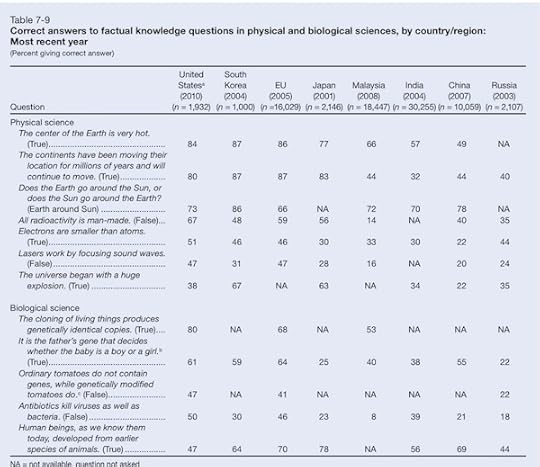Carl Zimmer's Blog, page 42
June 25, 2012
The known unknowns of the future of flu: My piece in tomorrow’s New York Times
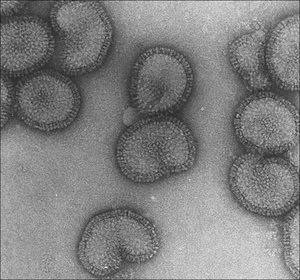 After half a year of stormy debate, we are finally getting to see all the gory details about how two teams of scientists produced some disturbing flu viruses. I’ve written about this unfolding story previously here, at Slate, here again, in the New York Times, and back here again.
After half a year of stormy debate, we are finally getting to see all the gory details about how two teams of scientists produced some disturbing flu viruses. I’ve written about this unfolding story previously here, at Slate, here again, in the New York Times, and back here again.
In tomorrow’s New York Times, I step back and take a look at the two published studies, and talk to experts about what those studies do–and don’t–tell us about how likely we are to face a new flu pandemic in the years to come. There’s still a huge amount about the flu that we don’t know yet, sorry to say. Check it out. (I also spoke with Times editor Michael Mason on this week’s science podcast. Listen here.)

June 21, 2012
Bird flu and beyond: I talk with PBS Newshour about A Planet of Viruses
Recently I stopped by the offices of PBS Newshour to talk with correspondent Hari Sreenivasan about viruses–from the bird flu that’s in the news today to the viruses that swarm the oceans. Here’s the video, and here’s their story about our conversation.

June 18, 2012
Turning doctors into wildlife managers: my story in tomorrow’s New York Times
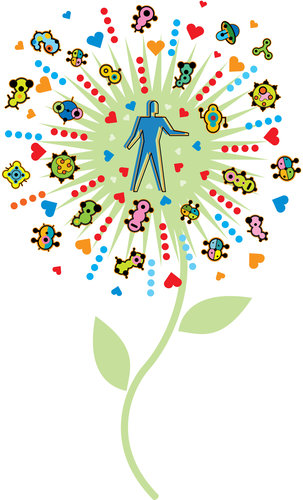 This month has seen a flood of new studies and reviews on the microbiome, the collection of creatures that call our bodies home. In tomorrow’s New York Times, I look at why scientists are going to so much effort to map out these 100 trillion microbes.
This month has seen a flood of new studies and reviews on the microbiome, the collection of creatures that call our bodies home. In tomorrow’s New York Times, I look at why scientists are going to so much effort to map out these 100 trillion microbes.
The microbiome is not just an opportunistic film of bugs: it’s an organ that play an important part in our well-being. It starts to form as we’re born, develops as we nurse, and comes to maturity like other parts of the body. It stabilizes our immune system, keeps our skin intact, synthesizes vitamins, and serves many other functions. Yet the microbiome is an organ made up of thousands of species–an ecosystem, really. And so a number of scientists are calling for a more ecological view of our health, rather than simply trying to wage warfare against infections.

June 17, 2012
Monkey Heart Attacks and Barnacle Penises: My take on the new book “Zoobiquity”
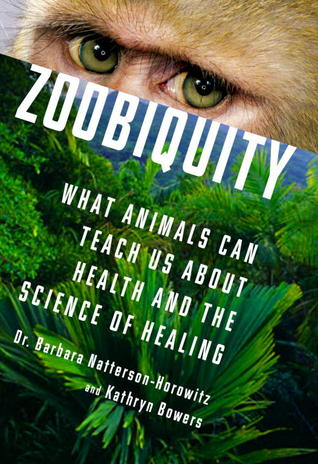 A new book is out, called Zoobiquity: What Animals Can Teach Us About Health and the Science of Healing, coauthored by cardiologist Barbara Natterson-Horowitz and science writer Kathryn Bowers. They take a look at the surprising parallels between animal and human health. The Daily Beast asked me to review it, and you can read my piece here.
A new book is out, called Zoobiquity: What Animals Can Teach Us About Health and the Science of Healing, coauthored by cardiologist Barbara Natterson-Horowitz and science writer Kathryn Bowers. They take a look at the surprising parallels between animal and human health. The Daily Beast asked me to review it, and you can read my piece here.
The facts that animals and humans share an evolutionary heritage, and that we can gain medical insights through a comparison between species, are not new. And Zoobiquity contains some misconceptions about how evolution works and how to analyze it. Nevertheless, I think the book well-worth reading. I learned a lot from it about things ranging from cancerous rhino horns to anorexic pigs.
Check out my review here. (You can also read a fairly long excerpt from the book in the New York Times here.)

June 14, 2012
We Are Viral From the Beginning
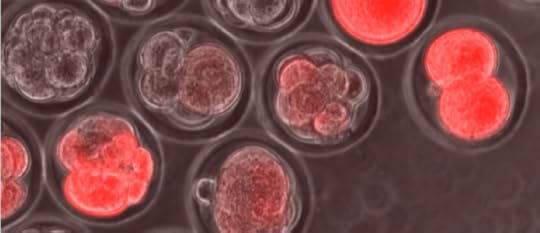 We all started out as a fertilized egg: a solitary cell about as wide as a shaft of hair. That primordial sphere produced the ten trillion cells that make up each of our bodies. We are not merely sacs of identical cells, of course. A couple hundred types of cells arise as we develop. We’re encased in skin, inside of which bone cells form a skeleton; inside the skull are neurons woven into a brain.
We all started out as a fertilized egg: a solitary cell about as wide as a shaft of hair. That primordial sphere produced the ten trillion cells that make up each of our bodies. We are not merely sacs of identical cells, of course. A couple hundred types of cells arise as we develop. We’re encased in skin, inside of which bone cells form a skeleton; inside the skull are neurons woven into a brain.
What made this alchemy possible? The answer, in part, is viruses.
Viruses are constantly swarming into our bodies. Sometimes they make us sick; sometimes our immune systems vanquish them; and sometimes they become a part of ourselves. A type of virus called a retrovirus makes copies of itself by inserting its genes into the DNA of a cell. The cell then uses those instructions to make the parts for new viruses. HIV makes a living this way, as do a number of viruses that can trigger cancer.
On rare occasion, a retrovirus may infect an egg. Now something odd may happen. If the egg becomes fertilized and gives rise to a whole adult individual, all the cells ...

June 13, 2012
“From Page to Pixel” on Slideshare
I had the pleasure of kicking off the annual meeting of the Society for the Preservation of Natural History Collections with a keynote lecture on the impact of the Internet on science writing and museums. One audience member asked if she could see the slides again to follow some of the links. So here they are, courtesy of SlideShare.
From Page to Pixel (or What Chuck Norris and Tapeworms Taught Me About the Future of Journalism and Science)
View more presentations from cwzimmer

June 12, 2012
This morning’s interview subject
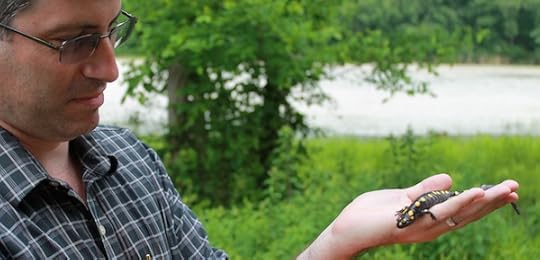 Connecticut isn’t exactly the Amazon. But our spotted salamanders are pretty handsome. And, as an added bonus, they’re evolving in some interesting ways. Full details to come!
Connecticut isn’t exactly the Amazon. But our spotted salamanders are pretty handsome. And, as an added bonus, they’re evolving in some interesting ways. Full details to come!

June 11, 2012
Science Literacy: A Worldwide Look
I was skimming through the new Science and Engineering Indicators 2012 from the National Science Foundation when I came across this very interesting table. Whenever I see reports about science literacy in the United States, the reports are very parochial, with no comparison to other counties. Here is a table of scores on similar tests given around the world. We Americans do relatively well on a lot of the questions (although that sometimes means we’re about as bad as most other countries). The one big exception is when Americans are asked about the origin of the universe and of our species.
[pdf]

June 8, 2012
Ebooks resurrected: Brain Cuttings is back on Amazon
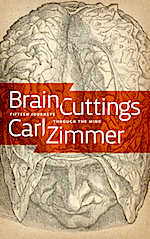
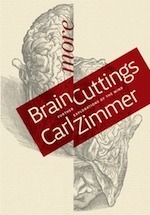 I’ve brought together some of my favorite pieces about the brain in two ebooks, Brain Cuttings: Fifteen Journeys Through the Mind, and More Brain Cuttings: Further Explorations of the Mind. Earlier this year, the distributor for the ebooks, IPG, got into an ugly fight with Amazon, which led to Amazon yanking IPG’s 5,000 ebooks. Which was a bummer. Just recently, though, the two sides came to an agreement. (The details are here.)
I’ve brought together some of my favorite pieces about the brain in two ebooks, Brain Cuttings: Fifteen Journeys Through the Mind, and More Brain Cuttings: Further Explorations of the Mind. Earlier this year, the distributor for the ebooks, IPG, got into an ugly fight with Amazon, which led to Amazon yanking IPG’s 5,000 ebooks. Which was a bummer. Just recently, though, the two sides came to an agreement. (The details are here.)
And that means my ebooks are back. Click here for the Kindle edition of Brain Cuttings, and here for More Brain Cuttings.
Of course, you can also order both ebooks elsewhere if you’re so inclined:
Brain Cuttings: iTunes, Barnes & Noble, Scott & Nix (my publisher)
More Brain Cuttings: iTunes, Barnes & Noble, Scott & Nix

June 5, 2012
Your guide to zombie parasite journalism
 In the past few weeks, there’s been a string of horrific tales of cannibalism and other zombie-esque behavior in the news. How to explain a handful of reports of people doing the unspeakable? One answer circulating around these days is that it must be parasites. And for some journalists, the question demands a call to the Centers for Disease Control to find out what they’re hiding from us!
In the past few weeks, there’s been a string of horrific tales of cannibalism and other zombie-esque behavior in the news. How to explain a handful of reports of people doing the unspeakable? One answer circulating around these days is that it must be parasites. And for some journalists, the question demands a call to the Centers for Disease Control to find out what they’re hiding from us!
1. Andy Campbell of the Huffington Post asked the CDC if some kind of zombie virus was to blame for the recent attacks. On June 1, he reported on HuffPo’s Politics page the following scoop:
“CDC does not know of a virus or condition that would reanimate the dead (or one that would present zombie-like symptoms),” wrote agency spokesman David Daigle in an email to The Huffington Post.
The Huffington Post entitled Campbell’s hard-hitting investigation, “Zombie Apocalypse: CDC Denies Existence Of Zombies Despite Cannibal Incidents.” That’s perhaps the finest deployment of the word despite in the history of journalism.
The story, by the way, received 65,797 likes on Facebook.
2. The Daily Caller picked up Campbell’s expose later that day, essentially reposting his whole piece. But Daily Caller ...
















